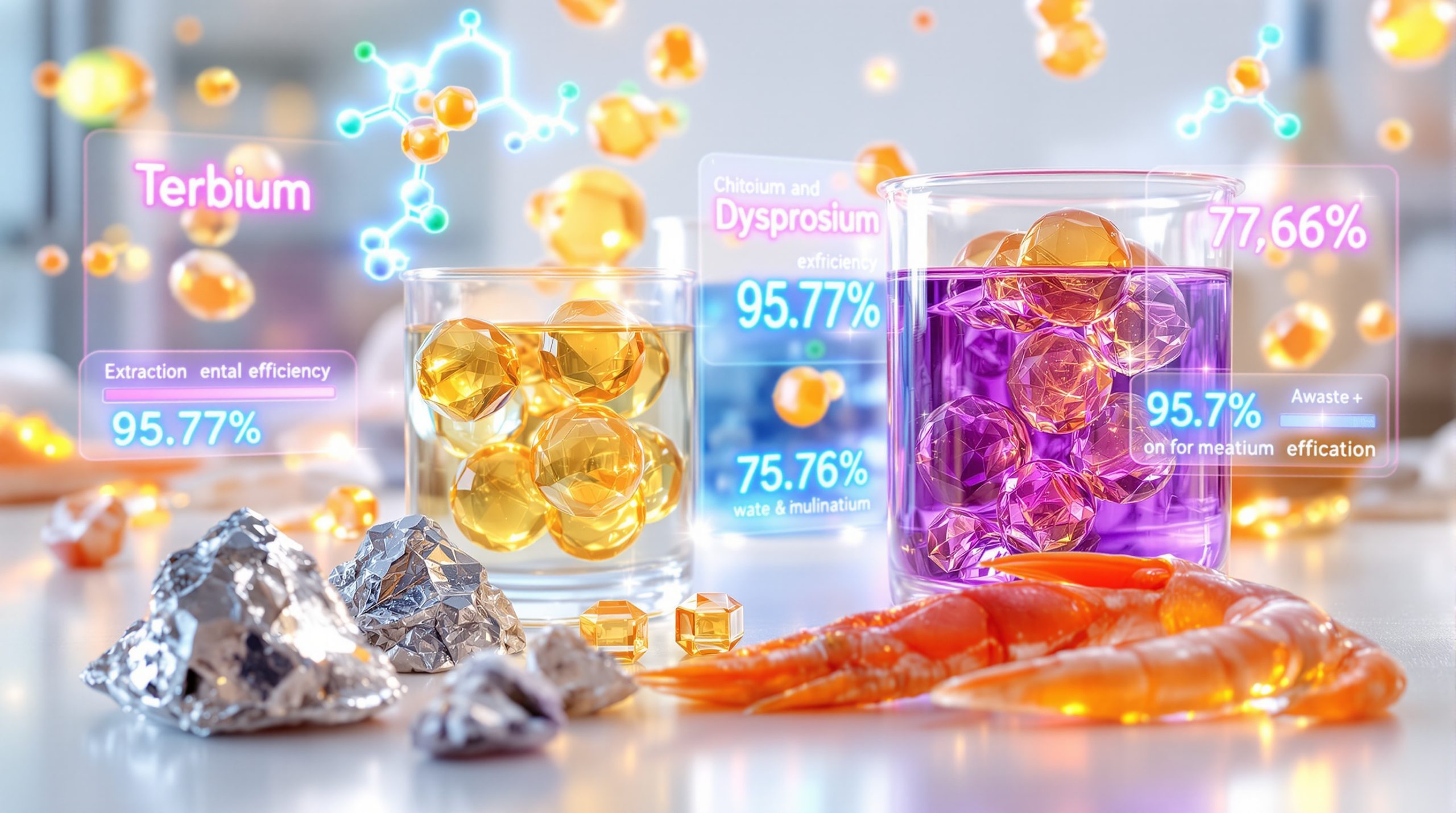The lithium sector has experienced a remarkable transformation throughout 2024 and into 2025, with market dynamics shifting decisively from oversupply concerns to emerging supply-demand imbalances. When considering which lithium stocks to buy, investment banks are now identifying compelling signals of a new bull cycle, driven by accelerating electric vehicle adoption and expanding energy storage deployments globally.
Recent analysis from major financial institutions reveals that continued inventory drawdowns and steady increases in spot spodumene prices validate the constructive outlook for lithium markets. This represents a significant departure from the challenging market conditions that characterised much of 2024, when producers faced pricing pressures and demand uncertainties.
Key Market Indicators for 2025:
• Global electric vehicle sales reached approximately 14 million units in 2023, representing 14% of total vehicle sales
• Spodumene concentrate pricing showing consistent recovery trends through Q4 2024
• Major automotive manufacturers securing long-term supply agreements with lithium producers
• Government policy support strengthening across key markets including the United States and Europe
The lithium market recovery reflects broader trends in the global energy transition, with battery demand continuing to expand across multiple applications. Furthermore, energy storage systems for grid stabilisation, residential applications, and industrial uses are creating additional demand streams beyond traditional electric vehicle applications.
Market participants are now focusing on supply-side constraints as new production capacity struggles to keep pace with accelerating demand growth. This fundamental shift has created investment opportunities across the lithium value chain, from exploration companies through integrated producers and downstream processing operations.
How Do You Evaluate Lithium Stocks for Investment?
Critical Financial Metrics for Lithium Companies
When assessing lithium investment opportunities, specialised metrics provide deeper insights than traditional valuation approaches commonly applied to other industrial sectors. The unique characteristics of lithium production, including long development timelines and commodity price volatility, require focused analytical frameworks.
Operational Cost Analysis:
• All-in Sustaining Costs (AISC) per tonne of lithium carbonate equivalent provide crucial profitability benchmarks
• Operating expenditure efficiency ratios relative to production volumes
• Capital expenditure requirements for expansion projects and sustaining investments
• Cash cost positioning relative to current and projected lithium prices
AISC calculations incorporate mining and processing costs, royalties and government levies, general administrative expenses allocated to production, and sustaining capital expenditure requirements. Companies with AISC positioning below industry averages typically maintain better downside protection during price cycles.
Production and Reserve Metrics:
• Proven and probable lithium reserves measured in Lithium Carbonate Equivalent (LCE)
• Annual production capacity and current utilisation rates
• Resource grade quality and extraction complexity factors
• Mine life expectancy and expansion potential based on reserve additions
Resource classification follows the JORC Code (Australasian Code for Reporting of Exploration Results, Mineral Resources and Ore Reserves), ensuring standardised reporting across Australian-listed companies. The conversion standard of approximately 5.32 tonnes LCE per tonne of lithium metal provides consistency in reserve comparisons.
Investment Insight: Companies maintaining strong operational metrics during market downturns typically emerge stronger during recovery phases, providing superior risk-adjusted returns for patient investors.
Strategic Positioning Factors
Beyond financial metrics, strategic positioning determines long-term investment success in the lithium sector. Consequently, geographic, operational, and partnership factors influence competitive advantages.
Geographic Advantages:
• Proximity to major battery manufacturing hubs in Asia, Europe, and North America
• Political stability and mining-friendly regulatory environments
• Transportation infrastructure access for efficient product logistics
• Water availability for processing operations, particularly relevant for hard-rock operations
Australia's position as a major hard-rock lithium producer benefits from established mining infrastructure, stable regulatory environment, and strategic location relative to Asian battery manufacturing centres. These advantages contribute to lower operational risks compared to some international jurisdictions.
Supply Chain Integration:
• Direct offtake agreements with battery manufacturers providing revenue certainty
• Downstream processing capabilities adding value beyond concentrate production
• Joint venture partnerships with automotive Original Equipment Manufacturers
• Vertical integration opportunities across the lithium-to-battery value chain
Which Global Lithium Stocks Offer the Strongest Investment Potential?
Established Market Leaders
Albemarle Corporation (NYSE: ALB)
Albemarle maintains its position as a global lithium production leader with diversified operations across Chile, Australia, and the United States. The company's integrated approach spans brine and hard-rock operations, providing production flexibility and geographic diversification advantages.
The company's Chilean operations in the Atacama Desert represent world-class brine assets with low-cost production characteristics. Australian hard-rock operations complement the portfolio with different cost structures and market positioning. United States operations benefit from domestic supply chain initiatives and government support through programs like the Inflation Reduction Act.
Recent corporate strategy emphasises capacity expansion across multiple jurisdictions, with significant capital investments planned through 2027. The company's diversified product portfolio includes both lithium hydroxide and lithium carbonate, serving different battery chemistry requirements and market applications.
Sociedad Química y Minera (NYSE: SQM)
SQM operates as the world's largest lithium producer from brine operations, with dominant market share derived from Chilean Atacama Desert reserves. The company's competitive advantages stem from exceptionally low-cost production and high-quality lithium deposits.
The Atacama operations benefit from natural lithium-rich brine concentrations and favourable geographic conditions for evaporative processing. This results in cash costs significantly below global averages, providing substantial profit margins even during commodity price downturns.
International expansion initiatives include strategic investments in Australian hard-rock operations and Chinese downstream processing facilities. These investments provide geographic diversification and access to different market segments while maintaining the core low-cost Chilean operations.
Emerging Growth Opportunities
Ganfeng Lithium (OTC: GNENF)
Ganfeng operates as a vertically integrated lithium company spanning mining operations through battery recycling capabilities. This comprehensive approach provides exposure across the entire lithium value chain while reducing dependence on any single business segment.
Strategic assets across Australia, Chile, and Argentina provide geographic diversification and access to both hard-rock and brine resources. The company's partnerships with major automotive manufacturers create direct market access and revenue stability through long-term supply agreements.
The company's focus on lithium hydroxide production aligns with industry trends toward high-nickel battery chemistries, which require higher-purity lithium compounds. This positioning provides premium pricing opportunities compared to standard lithium carbonate products.
Tianqi Lithium (OTC: TQLCF)
Tianqi maintains significant ownership stakes in world-class lithium assets, including the Greenbushes mine in Western Australia. The Greenbushes operation represents one of the largest and highest-grade hard-rock lithium deposits globally.
Strategic partnerships with established producers like SQM provide access to Chilean brine resources while leveraging operational expertise. This partnership approach allows capital efficiency while accessing diverse resource types and geographic markets.
The company's emphasis on high-purity lithium compounds for premium applications creates differentiation in competitive markets. Focus areas include battery-grade lithium hydroxide and specialised compounds for advanced battery technologies.
What Australian Lithium Stocks Should Investors Consider?
Large-Cap Australian Producers
Pilbara Minerals (ASX: PLS)
Pilbara Minerals operates as the world's largest independent hard-rock lithium producer, with the Pilgangoora operation representing scale advantages in spodumene concentrate production. The company's position in Western Australia's established lithium mining region provides infrastructure benefits and operational synergies.
Recent market analysis suggests investor caution regarding valuation levels relative to current lithium pricing. Major investment banks have noted that some Australian producers are trading at implied lithium price assumptions above current market levels, suggesting potential valuation compression risks.
The company's cash generation capabilities have supported dividend distributions and expansion investments, demonstrating financial strength during challenging market conditions. Strategic location advantages include proximity to established port facilities and mining service providers.
Mineral Resources (ASX: MIN)
Mineral Resources combines significant lithium exposure with diversified mining operations across iron ore and other commodities. This diversification provides cash flow stability during lithium market cycles while maintaining substantial exposure to battery materials demand.
Joint venture partnerships with international producers like Albemarle provide operational expertise and technology transfer benefits. These partnerships enable accelerated development timelines and reduced execution risks compared to standalone development approaches.
However, recent analyst assessment indicates concerns about current valuation levels relative to fundamental value drivers. Investment banks have assigned underperform ratings based on trading multiples that may not reflect underlying asset values at current commodity prices.
Mid-Cap Growth Stories
IGO Limited (ASX: IGO)
IGO maintains a diversified portfolio spanning lithium, nickel, and copper assets, providing exposure to multiple battery materials while reducing single-commodity dependence. This strategic approach aligns with broader electrification trends beyond lithium-specific applications.
The company's partnership involvement in the Greenbushes mine through joint ventures with Tianqi Lithium provides access to world-class lithium resources. This partnership approach enables capital efficiency while accessing premium assets and operational expertise.
Recent analyst assessment has identified IGO as an outperform opportunity within the lithium sector, representing one of limited companies receiving positive ratings from major investment banks. This assessment reflects attractive valuation relative to asset quality and growth prospects.
Liontown Resources (ASX: LTR)
Liontown Resources operates the Kathleen Valley project, which has been ramping toward full production capacity. The project represents high-grade spodumene concentrate production with modern processing facilities and established offtake agreements.
Strategic partnerships with major battery manufacturers provide revenue certainty and market access during the production ramp phase. These relationships demonstrate industry validation of the project's technical specifications and production capabilities.
Despite operational progress, recent analyst assessment suggests caution regarding near-term investment returns. Major investment banks have assigned underperform ratings, indicating potential challenges in achieving expected financial returns at current market conditions.
Additional Australian Opportunities
Elevra Lithium (ASX: ELV)
Elevra Lithium represents one of the limited Australian lithium companies receiving outperform ratings from major investment banks. This positive assessment reflects potential value creation opportunities relative to current market positioning.
Patriot Battery Metals (ASX: PMT)
Patriot Battery Metals has earned outperform ratings based on development projects and strategic positioning within the lithium sector. The company's focus on battery materials aligns with long-term electrification trends.
Core Lithium (ASX: CXO)
Core Lithium recently achieved 12-month high share price levels, reaching $0.22 per share. The company has been evaluating potential restart decisions for its Finnis mine operation in the Northern Territory based on improving market conditions and lithium price recovery.
Company leadership has indicated that restart decisions remain contingent on market conditions, financing solutions, and sustainable project economics. Recent improvements in lithium market sentiment have created potential catalysts for operational decisions.
How Do US-Based Lithium Stocks Compare?
Domestic Production Focus
Lithium Americas (NYSE: LAC)
Lithium Americas represents the largest lithium resource development in the United States through the Thacker Pass project in Nevada. This domestic production capability aligns with US government initiatives to establish secure supply chains for critical minerals.
Strategic partnerships with major automotive manufacturers like General Motors provide offtake security and industry validation. These relationships demonstrate market confidence in the project's technical feasibility and production timeline expectations.
Government support through the Inflation Reduction Act provides financial incentives and policy backing for domestic lithium production. This support includes tax credits, loan guarantees, and strategic material stockpiling programs that benefit domestic producers.
Expected production commencement in the 2026-2027 timeframe positions the company to benefit from projected supply-demand imbalances in North American markets. The project scale represents potential material impact on domestic lithium supply availability.
Piedmont Lithium (NASDAQ: PLL)
Piedmont Lithium focuses on North Carolina spodumene project development, representing another domestic supply option for US battery manufacturers. The project benefits from established mining infrastructure and proximity to potential processing facilities.
Strategic partnerships with automotive manufacturers provide revenue visibility and market access during development phases. These relationships include supply agreements and potential joint venture structures for project development.
The company's emphasis on sustainable mining practices and community engagement addresses environmental and social considerations increasingly important to automotive industry partners. This approach may provide competitive advantages in securing long-term supply relationships.
US supply chain localisation trends create potential advantages for domestic producers through policy support and customer preference for secure supply sources. These trends reflect national security considerations and supply chain resilience initiatives.
What Risks Should Lithium Stock Investors Consider?
Market Volatility Factors
Price Cyclicality:
• Lithium prices demonstrate significant historical volatility with boom-bust cycles
• Supply-demand imbalances create rapid price movements affecting producer profitability
• New mine development timelines can create oversupply conditions
• Technology changes may affect lithium demand intensity in battery applications
Commodity price cycles represent inherent risks in lithium investing, with prices historically exhibiting greater volatility than many other industrial materials. These cycles reflect the industry's relatively small size and concentrated production base, making supply-demand balances susceptible to individual project developments.
Operational Risks:
• Mining operations face weather-related disruptions and geological challenges
• Environmental and regulatory compliance requirements create ongoing cost pressures
• Labour availability and wage inflation affect operational cost structures
• Infrastructure limitations in remote mining locations impact operational efficiency
Hard-rock lithium operations face different risk profiles compared to brine operations, with processing complexity and energy requirements creating distinct cost structures. For instance, lithium mining and brines operations depend on evaporation processes that can be affected by weather patterns and water availability.
Strategic Risk Assessment
Technology Disruption:
• Alternative battery chemistries may reduce lithium content requirements
• Battery recycling technologies could impact primary lithium demand
• Solid-state battery development creates uncertainty about future lithium requirements
• Energy storage technology evolution may change demand patterns
Battery technology development represents both opportunities and risks for lithium demand. While current trends favour increased lithium content in high-performance batteries, alternative technologies under development could change long-term demand projections. Additionally, the emergence of a battery recycling breakthrough could significantly impact primary lithium demand.
Geopolitical Considerations:
• Resource nationalism policies in key producing countries affect project access
• International trade policy changes impact supply chain operations
• Environmental regulations create compliance costs and operational constraints
• Currency fluctuations affect international operations and product pricing
The lithium industry's geographic concentration creates exposure to political and regulatory changes in key producing regions. Countries containing significant lithium resources may implement policies favouring domestic processing or restricting export volumes.
Which Investment Strategy Works Best for Lithium Stocks?
Portfolio Construction Approaches
Diversified Exposure Strategy:
• Combine established producers with development-stage companies for risk balance
• Geographic diversification across major lithium-producing regions reduces political risk
• Mix hard-rock and brine operations for different cost structure exposure
• Include pure-play lithium companies alongside diversified mining operations
Diversification across the lithium value chain provides exposure to different risk-return profiles while reducing single-company or single-project dependence. This approach balances income generation from established producers with growth potential from development companies.
Value-Focused Approach:
• Target companies trading below net present value of proven reserves
• Emphasise low-cost producers with sustainable competitive advantages
• Focus on companies with strong balance sheets and demonstrated cash generation
• Consider dividend-paying stocks for income generation during volatile periods
Value investing principles apply effectively to lithium stocks by focusing on asset quality, cost positioning, and financial strength rather than momentum or speculative factors. This approach provides better downside protection during market cycles.
Timing and Risk Management
Market Entry Strategies:
• Dollar-cost averaging reduces timing risk during volatile market conditions
• Position sizing based on individual risk tolerance and portfolio objectives
• Consider lithium-focused ETFs for broader sector exposure without single-stock risk
• Monitor supply-demand fundamentals for tactical entry and exit timing
Systematic investment approaches help manage the inherent volatility in commodity-related stocks while maintaining exposure to long-term growth trends. Regular investment schedules reduce the impact of short-term price fluctuations on overall returns.
Performance Monitoring:
• Track quarterly production growth and unit cost performance metrics
• Monitor lithium price trends and global inventory level changes
• Assess progress on expansion projects and strategic partnership developments
• Review company guidance updates and management commentary on market conditions
What Does the Future Hold for Lithium Investments?
Long-Term Demand Drivers
Electric Vehicle Growth:
• Global EV sales projected to reach 30 million units annually by 2030
• Battery capacity requirements increasing with longer-range vehicle development
• Commercial vehicle electrification creating substantial additional demand
• Two-wheeler and e-bike markets expanding rapidly across Asian markets
Electric vehicle adoption continues accelerating globally, driven by government mandates, technology improvements, and changing consumer preferences. Battery capacity per vehicle has been increasing as manufacturers focus on extended range capabilities, creating higher lithium content per unit.
Energy Storage Expansion:
• Grid-scale storage deployments accelerating to support renewable energy integration
• Residential battery storage adoption increasing in markets with favourable policies
• Industrial energy storage applications growing for manufacturing and data centres
• Renewable energy integration driving utility-scale storage demand
Energy storage represents a rapidly growing application for lithium batteries beyond transportation. Grid stabilisation requirements increase as renewable energy penetration grows, creating sustained demand for large-scale battery installations.
Supply Chain Evolution
Production Capacity Expansion:
• Major producers investing billions in capacity increases across multiple regions
• New mining projects entering production through 2027 in Australia, Chile, and Argentina
• Processing capacity additions required to meet refined lithium product demand
• Battery recycling infrastructure development reducing primary supply pressure over time
The lithium supply chain requires substantial capital investment to meet projected demand growth. Processing capacity for converting raw materials into battery-grade lithium compounds represents a particular constraint requiring focused investment.
Technology Advancements:
• Direct lithium extraction technologies improving brine operation recovery rates
• Processing efficiency improvements reducing production costs across operations
• Battery recycling technologies becoming commercially viable for secondary supply
• Exploration techniques identifying new resource opportunities in established regions
In particular, developments in regions like Argentina present compelling opportunities. The argentina lithium brine insights highlight the potential for significant expansion in South American lithium production capacity.
Building a Strategic Lithium Investment Portfolio
The lithium investment landscape in 2025 presents compelling opportunities for investors seeking exposure to the global energy transition. Market fundamentals have strengthened significantly from the challenging conditions of mid-2024, with inventory drawdowns and recovering prices indicating improved supply-demand balance.
Strategic Investment Framework:
• Diversify across established producers and growth-stage development companies
• Emphasise companies with demonstrated low-cost operations and strong balance sheets
• Consider geographic and operational diversification strategies to reduce concentration risk
• Monitor technological developments and regulatory changes affecting long-term demand
Top-Tier Investment Categories:
• Global Leaders: Albemarle, SQM, and Ganfeng Lithium provide scale, operational stability, and global market access
• Australian Opportunities: Companies like IGO Limited offer attractive risk-adjusted returns based on current analyst assessments
• US Development Stories: Lithium Americas and Piedmont Lithium benefit from domestic supply chain support and government policy backing
• Emerging Growth: Select development companies with strong project fundamentals and strategic partnerships
Recent analysis from major investment banks identifies specific opportunities within the Australian lithium sector. However, understanding which lithium stocks to buy requires careful consideration of technological advances, such as the revolution in lithium batteries, which could significantly impact demand patterns.
This selective approach reflects the importance of fundamental analysis in identifying value opportunities. Conversely, some established producers face valuation challenges, with market prices potentially reflecting more optimistic lithium price assumptions than current fundamentals support.
The sector's long-term outlook remains positive, supported by accelerating electric vehicle adoption and expanding energy storage deployments. However, investors should maintain disciplined portfolio construction approaches and active risk management, given the inherent volatility in commodity markets and evolving battery technology landscape.
Successful lithium investing requires understanding both the technical aspects of mining and processing operations and the broader dynamics of the global energy transition. Companies combining operational excellence with strategic positioning across the battery supply chain are positioned to generate superior returns for patient investors willing to navigate short-term volatility.
The convergence of favourable policy support, improving market fundamentals, and long-term demand growth creates an attractive investment environment for which lithium stocks to buy in 2025. Furthermore, the implementation of australian lithium tax breaks provides additional incentives for domestic production and investment.
Investors who approach the sector with appropriate diversification, fundamental analysis, and risk management disciplines can potentially benefit from this structural growth opportunity.
Ready to Invest in the Next Major Mineral Discovery?
Discovery Alert's proprietary Discovery IQ model delivers instant notifications on significant ASX mineral discoveries, transforming complex market data into actionable investment insights ahead of the broader market. Start your 30-day free trial today and position yourself to capitalise on emerging opportunities in lithium and critical minerals whilst they're still undervalued.




